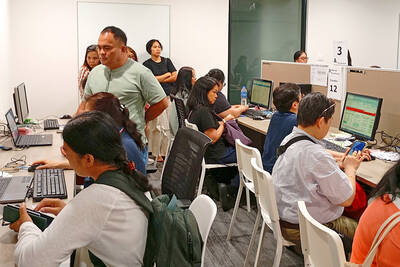Down in the basement, dead pigeons lay on their backs, wings splayed, their bodies sliced open at the breastbone. White powder, an abrasive, was sprinkled liberally over the carcasses. Then a hand carefully reached in behind each of the birds’ knees and tugged, patiently pulling the torsos free from the wings.
This was not part of some kind of odd ritual or a scene from a disturbing horror movie. It was just another Saturday afternoon taxidermy class at the Morbid Anatomy Museum in Brooklyn. Other classes, which typically sell out in advance, have featured chipmunks and the heads of mammals, like coyotes or foxes.
“We started offering taxidermy classes about five years ago and they were an immediate and insane sensation,” Joanna Ebenstein, the museum’s creative director, said. “At one point we had a 600-person waiting list.”
Katie Innamorato, 25, one of the two taxidermists who teaches the classes, said most students had a serious interest in taxidermy or loved nature and the natural sciences.
For women, who represent a vast majority of the students, taxidermy is also a chance to learn a new and unusual craft.
“There is something taboo about this, so it’s as if we are expressing our repressed tomboy nature,” she said.
Innamorato, who prefers the larger mammals (“Squirrels are as small as I like to go”), said men tend to show up for a chance to slice into the heads of larger animals.
Some smaller animals, like mice and rabbits, often end up wearing clothes and posed in atypical positions — this is called rogue taxidermy.
“I think they get the anthropomorphic treatment because they’re cute and they’re featured in stories when we’re children,” she said.
Divya Anantharaman, the other taxidermist teaching the classes, said she preferred “the small, overlooked animals we don’t value as much.”
She came by her fascination early.
“My mom was a biology teacher and she had skins and lamb’s brains in jars in her classroom, so that had a huge influence on the way I saw nature and wildlife,” Anantharaman, 30, said. “I was able to see anatomy as something that isn’t gross, but that is pretty cool.”
Anantharaman’s first attempt at animal preservation failed.
“I was five or six and saw a lizard had died in our bug zapper,” she said. “I put it in my box with my collections of rocks and seashells. Of course it stunk after a few days.”
Her mother explained to her how animals were best preserved, but barred her from bringing home any roadkill. After Anantharaman moved from Miami to Brooklyn to study fashion and art at Pratt Institute, she worked as a shoe designer, but taught herself taxidermy and then studied with a taxidermist in upstate New York.
Two years ago, she became a full-time taxidermist, selling art pieces and later becoming a taxidermist in residence at the museum.
The museum, which opened in Gowanus last year as an outgrowth of Ebenstein’s blog, library collection and course offerings, explores the rituals and oddities surrounding human life, and especially death.
The six students in the fancy pigeon class ranged in age from 17 to 57; all but one was a woman.
“It’s kind of weird I’m the only guy here,” said Danilo Miglietta, who lives in Brooklyn, and who “likes to support my local creepy places.”
Half the students were from Manhattan, though Hanna Cable, 17, had traveled from Lexington, Kentucky, saving her money and persuading her mother, Katrina, to drive to Brooklyn during her spring break.
The classes often attract artists, and this one drew Jackie Mock, a sculptor and bartender, and Audrey Channoller, a painter, who envisioned using her pigeon in a still life.
“Life and death are always part of my art,” said Channoller, who brought a hatbox to transport her bird on the subway to her home in SoHo.
The class is comprehensive, covering topics like the use of abrasives in cleaning the birds and the ethics of procuring the animals.
Anantharaman described the Migratory Bird Treaty Act, an international agreement that made it illegal to use most wild birds for taxidermy.
She gets the birds for her classes — already dead — from breeders.
Anantharaman explained anatomy in easily understood terms, saying that pigeons do not fully extend their necks, so the students had to “roll it out like a sock or condom.”
She made plenty of other statements that are not often heard — even in New York:
“There’s a hole in his head, but we can fix it.”
“Whose carcass is whose?”
“I’ll bring out little scoops to take out the heads.”
While some remarks prompted a smile or a raised eyebrow, the students remained serious hour after hour, most working quietly by themselves. The class was scheduled to run from noon until 6pm, but as the clock ticked past 7:30pm, Anantharaman patiently circulated, helping everyone finish sewing and posing their birds.
“It’s hard, but I thought it would be more difficult,” said Donna Orton, a nurse who lives in the East Village.
Still, she said, she was likely to take another class before trying taxidermy at home.
“I still have a lot to learn. This one may go in the closet,” she said.

A new online voting system aimed at boosting turnout among the Philippines’ millions of overseas workers ahead of Monday’s mid-term elections has been marked by confusion and fears of disenfranchisement. Thousands of overseas Filipino workers have already cast their ballots in the race dominated by a bitter feud between President Ferdinand Marcos Jr and his impeached vice president, Sara Duterte. While official turnout figures are not yet publicly available, data from the Philippine Commission on Elections (COMELEC) showed that at least 134,000 of the 1.22 million registered overseas voters have signed up for the new online system, which opened on April 13. However,

EUROPEAN FUTURE? Albanian Prime Minister Edi Rama says only he could secure EU membership, but challenges remain in dealing with corruption and a brain drain Albanian Prime Minister Edi Rama seeks to win an unprecedented fourth term, pledging to finally take the country into the EU and turn it into a hot tourist destination with some help from the Trump family. The artist-turned-politician has been pitching Albania as a trendy coastal destination, which has helped to drive up tourism arrivals to a record 11 million last year. US President Donald Trump’s son-in-law, Jared Kushner, also joined in the rush, pledging to invest US$1.4 billion to turn a largely deserted island into a luxurious getaway. Rama is expected to win another term after yesterday’s vote. The vote would

ALLIES: Calling Putin his ‘old friend,’ Xi said Beijing stood alongside Russia ‘in the face of the international counter-current of unilateralism and hegemonic bullying’ Chinese President Xi Jinping (習近平) yesterday was in Moscow for a state visit ahead of the Kremlin’s grand Victory Day celebrations, as Ukraine accused Russia’s army of launching air strikes just hours into a supposed truce. More than 20 foreign leaders were in Russia to attend a vast military parade today marking 80 years since the defeat of Nazi Germany in World War II, taking place three years into Russia’s offensive in Ukraine. Putin ordered troops into Ukraine in February 2022 and has marshaled the memory of Soviet victory against Nazi Germany to justify his campaign and rally society behind the offensive,

Myanmar’s junta chief met Chinese President Xi Jinping (習近平) for the first time since seizing power, state media reported yesterday, the highest-level meeting with a key ally for the internationally sanctioned military leader. Senior General Min Aung Hlaing led a military coup in 2021, overthrowing Myanmar’s brief experiment with democracy and plunging the nation into civil war. In the four years since, his armed forces have battled dozens of ethnic armed groups and rebel militias — some with close links to China — opposed to its rule. The conflict has seen Min Aung Hlaing draw condemnation from rights groups and pursued by the